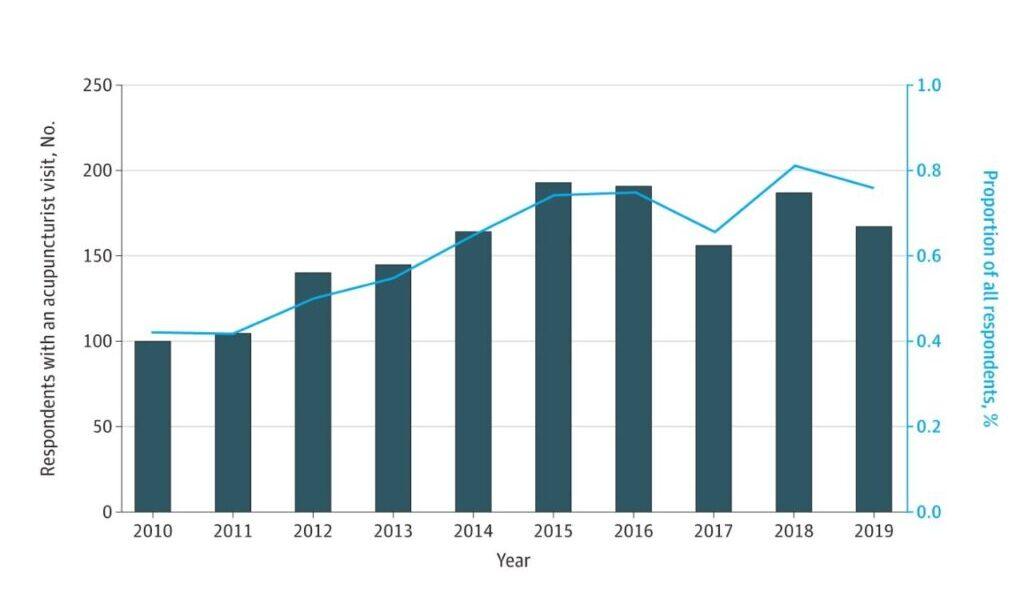In recent years, a quiet but steady shift has been unfolding in the world of healthcare. Once considered an alternative or fringe therapy, acupuncture is now stepping into the mainstream spotlight-not as a last resort, but as a first-choice treatment option backed by insurance plans. This newfound acceptance signals more than just changing attitudes; it reflects a growing recognition of acupuncture’s potential to complement conventional medicine. As policyholders find themselves with greater access to needle-based relief, the ancient practice is weaving itself into the fabric of modern healthcare, promising a blend of tradition and innovation that is reshaping patient care.
Table of Contents
- Acupuncture’s Rising Popularity in Modern Healthcare
- Understanding Insurance Coverage for Acupuncture Treatments
- Evaluating the Benefits and Limitations of Insurance-Backed Acupuncture
- Guidelines for Choosing an Insurance-Approved Acupuncture Provider
- Maximizing Your Insurance Benefits for Acupuncture Care
- Frequently Asked Questions
- Closing Remarks
Acupuncture’s Rising Popularity in Modern Healthcare
As more patients seek holistic and integrative approaches to wellness, acupuncture has emerged from the fringes of alternative medicine to become a respected component of mainstream healthcare. This surge is largely fueled by the increasing number of insurance providers recognizing acupuncture as a reimbursable treatment. Such endorsement not only validates its therapeutic potential but also significantly lowers the financial barrier for individuals exploring pain management, stress relief, and chronic condition care.
Healthcare systems today are embracing acupuncture not just as a complementary therapy but as a proactive measure within patient care plans. Hospitals and clinics increasingly offer acupuncture services alongside conventional treatments, highlighting its role in enhancing patient outcomes and reducing reliance on pharmaceuticals. This integration is supported by growing evidence from clinical studies demonstrating acupuncture’s effectiveness in alleviating symptoms such as migraines, arthritis, and anxiety.
Insurance coverage varies, but common benefits include:
- Partial or full reimbursement for acupuncture sessions
- Inclusion in wellness and chronic pain management programs
- Access to licensed practitioners recognized by major insurers
Below is a simple comparison of typical insurance plans and their acupuncture coverage:
| Insurance Provider | Coverage Level | Session Limit | Co-pay |
|---|---|---|---|
| HealthFirst | High | 12 per year | $20 |
| WellCare | Moderate | 8 per year | $30 |
| CarePlus | Basic | 4 per year | $40 |
This shift towards insurance-backed acupuncture is not just a trend but a reflection of evolving patient preferences and a broader acceptance of integrative medicine. As coverage expands, acupuncture’s role in modern healthcare is poised to grow, offering an accessible and effective path to holistic health for a diverse population.

Understanding Insurance Coverage for Acupuncture Treatments
Acupuncture, once considered an alternative therapy outside the realm of conventional insurance plans, is gradually weaving itself into the fabric of mainstream healthcare coverage. This shift is largely attributed to growing clinical evidence supporting its efficacy in managing pain, stress, and various chronic conditions. However, coverage varies widely, making it essential for patients to understand the nuances before scheduling a session.
Insurance providers typically evaluate acupuncture coverage based on:
- Medical necessity as defined by the insurer
- Type of condition being treated (e.g., chronic pain, migraines)
- Provider credentials and licensing status
- Plan-specific limits on sessions per year
Many major insurers now include acupuncture as a covered benefit, especially under plans that emphasize holistic or integrative health approaches. Yet, some plans may require pre-authorization or limit coverage to specific diagnoses. Patients should review their policies carefully or consult with insurance representatives to clarify coverage details.
| Insurance Type | Coverage Availability | Session Limits |
|---|---|---|
| Employer-Sponsored Plans | Often Included | 12-20 sessions/year |
| Medicare | Limited (e.g., chronic low back pain) | Up to 12 sessions/year |
| Medicaid | Varies by State | Dependent on State Policy |
| Private Plans | Varies Widely | Depends on Plan Terms |

Evaluating the Benefits and Limitations of Insurance-Backed Acupuncture
Insurance-backed acupuncture has emerged as a compelling middle ground between traditional holistic care and modern healthcare financing. One of the most significant benefits is increased accessibility. Patients who previously hesitated due to out-of-pocket costs now find acupuncture within reach, encouraging a broader demographic to explore its therapeutic potential. This financial support also incentivizes providers to maintain high standards, boosting overall quality and trust in acupuncture services.
However, the integration of acupuncture into insurance plans is not without its challenges. Limitations often include:
- Restricted coverage scope, with some insurers only covering specific conditions.
- Pre-authorization requirements that can delay treatment.
- Limited session caps, which may not align with individual patient needs.
Patients and practitioners must navigate these constraints carefully to maximize benefits. Understanding the nuances of insurance policies is crucial, as coverage can vary widely between providers and regions. This variability can sometimes lead to confusion and inconsistent patient experiences.
| Benefit | Limitation |
|---|---|
| Reduced out-of-pocket costs | Limited treatment sessions |
| Improved access to qualified practitioners | Strict pre-authorization rules |
| Potential for integrated care plans | Coverage varies by insurer and condition |
Guidelines for Choosing an Insurance-Approved Acupuncture Provider
When navigating the landscape of acupuncture providers covered by insurance, it’s essential to focus on legitimacy and compatibility. Start by verifying the practitioner’s credentials-ensure they hold valid licenses and certifications recognized by your state’s acupuncture board. This is not just a formality; it guarantees that the provider adheres to professional standards and safety protocols, offering you peace of mind during treatment.
Insurance plans vary widely in their acupuncture coverage. Contact your insurer directly to obtain a detailed list of approved providers, or use their online directories to filter specialists who accept your plan. Keep in mind that some insurers may require a referral from your primary care physician, so confirming these prerequisites beforehand can save you time and unexpected expenses.
Choosing the right provider should also involve practical considerations such as:
- Clinic location and accessibility
- Provider experience with your specific health concerns
- Patient reviews and satisfaction ratings
- Availability of flexible appointment times
| Criteria | Why It Matters | Tips |
|---|---|---|
| Licensing | Ensures trained professionals | Check state acupuncture board websites |
| Insurance Acceptance | Reduces out-of-pocket costs | Confirm with both provider and insurer |
| Specialization | Matches treatment to your needs | Ask about experience with your condition |
| Patient Feedback | Reflects quality and care | Read multiple reviews for balance |

Maximizing Your Insurance Benefits for Acupuncture Care
Unlocking the full potential of your acupuncture benefits starts with understanding your insurance policy inside and out. Many plans now include coverage for acupuncture, but the extent varies widely. To avoid surprises, begin by reviewing your Explanation of Benefits (EOB) and identifying if acupuncture is classified under alternative medicine, physical therapy, or another category. This knowledge allows you to anticipate out-of-pocket expenses and plan your treatments accordingly.
Next, leverage the power of pre-authorization. Contact your insurance provider or the acupuncture clinic to verify whether prior approval is necessary. This step not only smooths the reimbursement process but can also prevent denied claims. Additionally, ask about any coverage limits such as the number of sessions per year or maximum dollar amounts, so you can schedule treatments within your plan’s guidelines.
- Keep detailed records: Save receipts, treatment notes, and referral letters to support your claims.
- Use in-network providers: Choosing certified acupuncturists within your insurer’s network can maximize coverage.
- Explore Health Savings Accounts (HSAs): These can be used to pay for acupuncture, offering tax advantages.
| Insurance Plan Type | Average Coverage | Session Limits |
|---|---|---|
| HMO | Up to 80% | 12/year |
| PPO | Up to 70% | 15/year |
| Medicare | Partial (specific conditions) | Varies |
Frequently Asked Questions
Q&A: Acupuncture Gains Ground as Insurance-Backed Option
Q1: What recent changes have occurred regarding acupuncture and insurance coverage?
A1: Acupuncture, once considered an alternative therapy, is increasingly being covered by mainstream health insurance plans. This shift reflects growing acceptance of acupuncture’s efficacy in managing various health conditions, making it more accessible to a broader population.
Q2: Why are insurance companies starting to back acupuncture treatments?
A2: Insurers are recognizing that acupuncture can offer cost-effective relief for chronic pain, stress, and other ailments, potentially reducing the need for expensive medications or surgeries. Supporting acupuncture aligns with a preventative and holistic approach to healthcare, which can lower overall treatment costs.
Q3: How does this insurance coverage impact patients?
A3: Patients benefit from reduced out-of-pocket expenses, encouraging them to explore acupuncture as a viable treatment option. This financial support can lead to increased utilization, improved health outcomes, and greater patient satisfaction.
Q4: Are there specific conditions for which acupuncture is now commonly covered?
A4: Yes, many insurance plans cover acupuncture primarily for pain management, such as back pain, osteoarthritis, migraines, and sometimes for anxiety or post-operative recovery. Coverage specifics vary by provider and plan.
Q5: What does this trend mean for the future of acupuncture in mainstream medicine?
A5: The growing insurance support signals a broader integration of acupuncture into conventional healthcare. It may lead to more research, standardized training for practitioners, and wider acceptance among medical professionals as a complementary therapy.
Q6: Should patients consider acupuncture as a replacement for conventional treatments?
A6: Acupuncture is generally viewed as a complementary therapy rather than a replacement. Patients should consult healthcare providers to develop a balanced treatment plan that may combine acupuncture with traditional medical approaches.
Q7: How can patients find insurance plans that cover acupuncture?
A7: Patients should review their health insurance benefits or speak directly with their provider to confirm coverage details. Additionally, some insurers list covered alternative therapies online or through customer service channels.
Q8: What challenges remain despite increased insurance backing for acupuncture?
A8: Despite progress, challenges include variability in coverage, limited awareness among patients and providers, and ongoing debates about acupuncture’s mechanisms and efficacy. Continued education and research are key to overcoming these hurdles.
Closing Remarks
As acupuncture steadily weaves its way into the fabric of mainstream healthcare, the growing acceptance by insurance providers marks a pivotal shift-from ancient practice to accessible option. For many, this integration not only eases financial barriers but also signals a broader openness to holistic approaches in managing wellness. Whether viewed as a complement or an alternative, acupuncture’s rising presence under the insurance umbrella invites us to rethink how traditional and modern medicine can coexist, offering patients new paths toward healing and balance.

